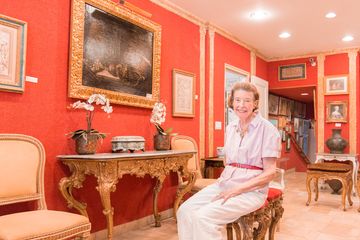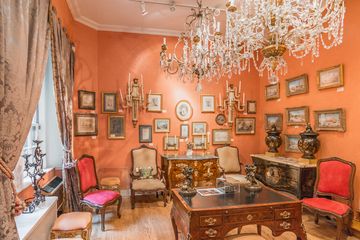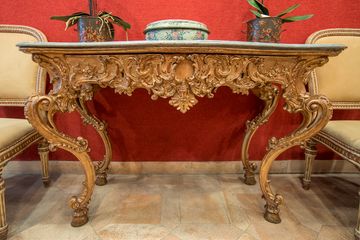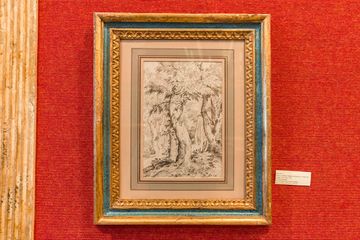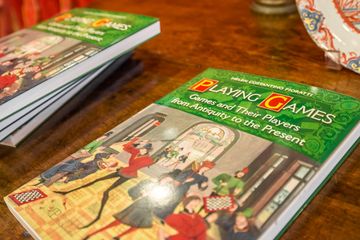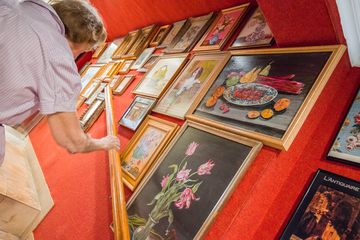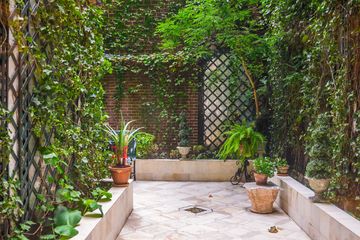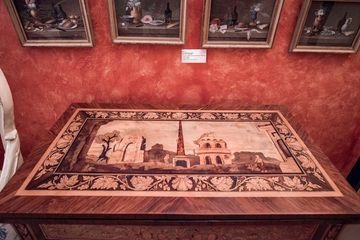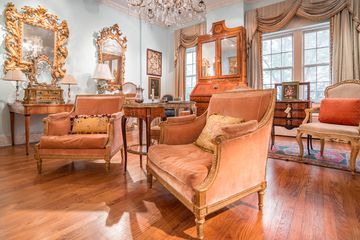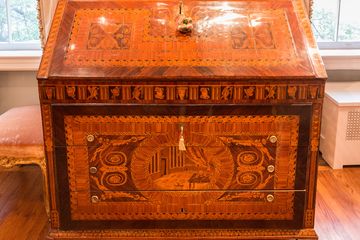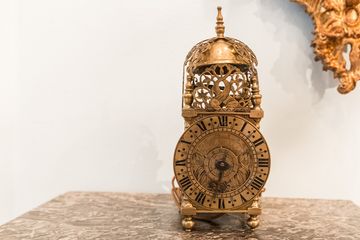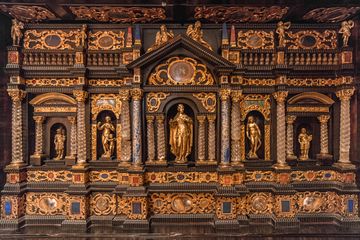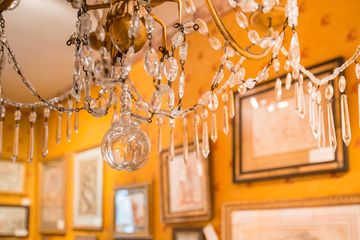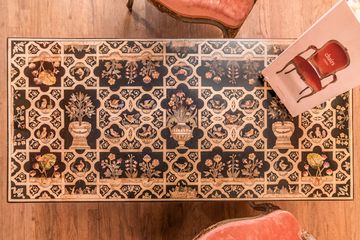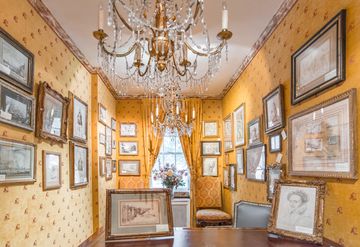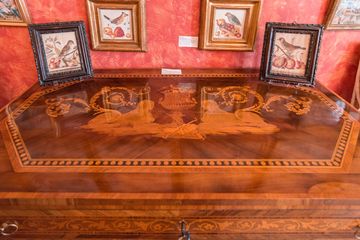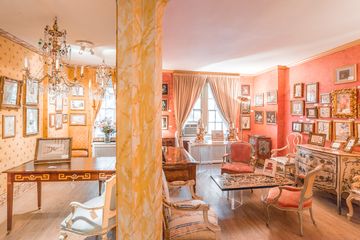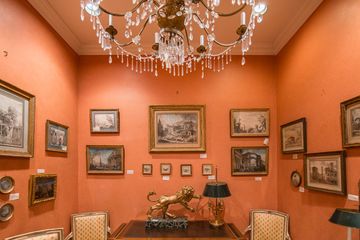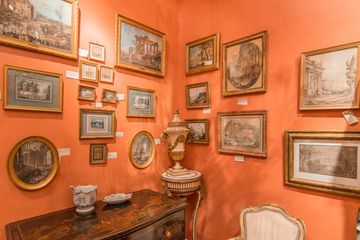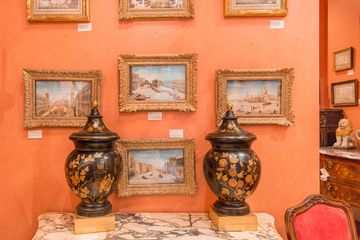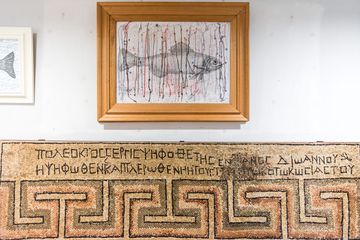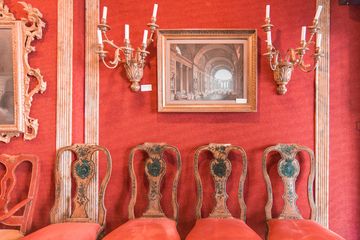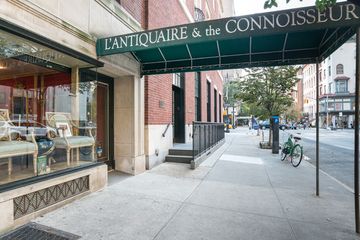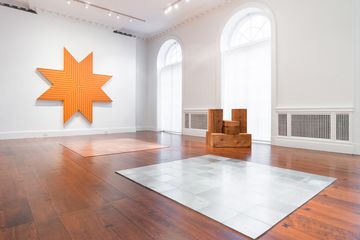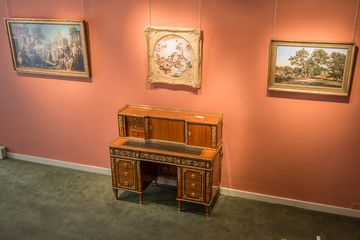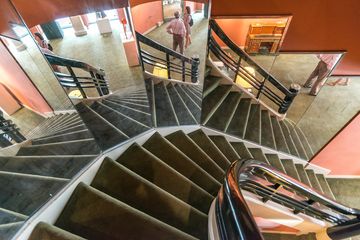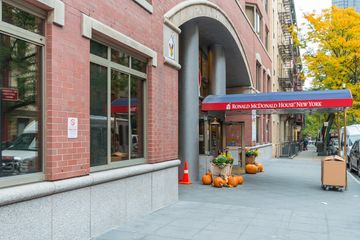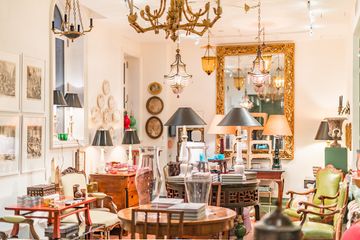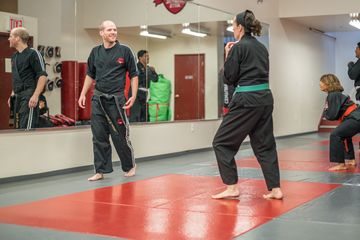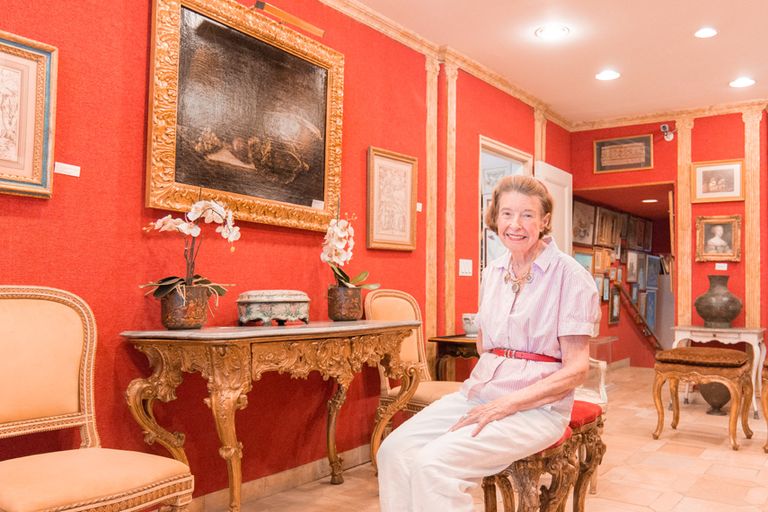
The first ground hall we visited at L'Antiquaire & The Connoisseur, a gallery that celebrates art from the eighteenth century and earlier, is the only section that features art from the twenty-first century. Helen Fioratti, the owner of the gallery, has put her daughter, Arianna Loreto's work on display. The modern, familial pieces leading to the elevator provided a perfect complement to the gilded and dazzling older antiques that we were about to visit. I was taken by Arianna's whimsical drafts and sketches that decorated the elevator, appreciating that visitors are surrounded by art at every turn.
Upon stepping out onto the second floor landing, I noticed a collection of chandeliers with candle fixtures instead of bulbs. Helen promptly informed me that each one is from the eighteenth century. With a slight smile, she went on to say, "I was told by a chandelier gallery that there are very few eighteenth century chandeliers on the market. I have ten, which I think is more than anybody else." As we wandered around the gallery, Helen pointed out treasures and told us about her life. Along with owning the shop, she is an interior designer who has worked with members of the Kennedy family and the Royal Family of Kuwait. She grew up in the art world, since her mother was Countess Ruth Constantino, the first female fine art dealer in the United States. Her mother started collecting art at a young age. The countess's uncle would pay her money to go to bed on time, which she would then spend on antiques when she went to Europe with her family.
When Ruth grew up, she worked for a German art dealer as an unpaid intern, because her father claimed that well-bred girls did not have jobs. She eventually persuaded her father to let her open a gallery, but soon married an Italian diplomat whom she met at the New York World's Fair in 1939. As Helen paraphrased her father, "Wives of Italian diplomats didn't work." Ruth opened a new gallery, but did not use her name, instead calling it "The Connoisseur Inc." This is the gallery that Helen would merge with her own in 1982. I asked Helen about her earliest memory having to do with art and antiques, and she responded with a story from when she was five years old: she picked the paint off of the antique Venetian commode in her bedroom and colored it back in with crayons. Helen added that when she first got married and opened her gallery, she already had a furniture collection put aside and needed no more to furnish their apartment.
Helen has the magic ability of breathing life into each of her pieces through suggestive storytelling. She showed me a cabinet that had belonged to the King of Portugal. There are twenty-eight secret compartments and a mirror on the top, which Helen said, "is where the king would model his crowns." I could immediately picture the regal purposes of the piece of furniture. Similarly, Helen said that a clock that caught my eye had been made by an Englishman for the se de Medici's in Florence. The clockmaker then decided to stay in Florence. His son became the greatest Scagliola master - meaning he was an expert in a specific form of decorative work. Since she seems to know the story behind all of her inventory, I asked Helen if it is ever difficult for her to have to sell a piece and part with it. "It's like having a marriageable daughter," she responded. "You don't want someone to take her, but it would also be sad if no one wanted her."
Some of the most interesting pieces in the store were the games tables. Helen has written many books in her life, including one on old games and the antiques that teach us how they used to be played. She then brought out a little bag that Louis XV would have given to one of his courtesans. It has carved ivory "fiches" that function as game pieces and have little fortunes wrapped inside. "It's a very rare thing," Helen said with a sparkle in her eye. There was also a collection of inlaid wood game tables, complete with clear outlines showing where to put cards, players, or pieces. Pointing to one that was signed with the artist's name, "RENOLDI," on an arch in the wooden landscape design, Helen told us that she looks for authenticity in her entire collection. "What I care about is that things are real all the way through," she said. "I even want the tips of feet to still be original."
Despite being in her antique business for thirty-five years, Helen is surprisingly spry and still does in-depth appraisals herself. "I may have to turn it over and crawl on the floor, but I can tell you if something is authentic," she stated. "In this gallery, if it's painted, the paint is original and if it's gilded, the gold is real." After exploring more of the multi-floor antique wonderland, with treasures like sixteenth century Italian ceramics, a fourteenth century illuminated manuscript leaf, and rare globes made of wood and paper mache, I returned to the first floor and Arianna's drawings. In a little corner of the room, Helen pointed out a picture of a cat that Arianna had drawn when she was twelve years old.
